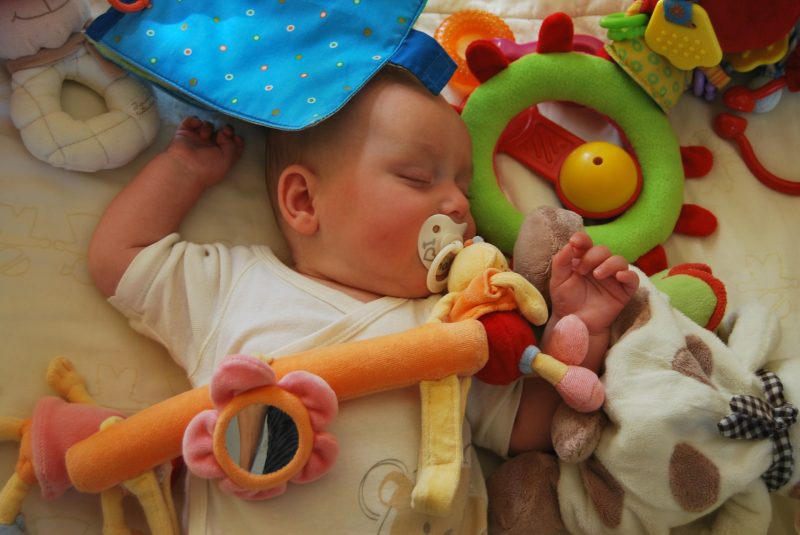Babies are born with a sucking reflex. Sucking on something is soothing to them. Unfortunately, most of them don’t have the coordination to suck on their fist, yet.
They also don’t need a bottle when they cry, as this can lead to overfeeding. Hence why most parents, myself included, opt for a pacifier. But what do you do when your baby keeps fussing, and they won’t take a pacifier?
Tips To Help Your Baby When They Won’t Take A Pacifier
If your little one won’t take a pacifier, there could be quite a few reasons. These tips and tricks will help you figure out why your little one won’t take a pacifier. They can also help you get your baby to finally take one.
Your Baby Won’t Take A Pacifier Because That’s Not What Is Wrong
Yes, sucking on something is soothing. However, that might not be what your baby needs. If they are still hungry, they’ll suck on their binky for a few seconds and resume crying.
This is because they are hungry, and milk doesn’t come out of a pacifier. If you notice your little one sucking on their pacifier for a brief period before spitting it out, consider trying other things that might be wrong with them.
They Don’t Like The Shape
Some babies will take just about any pacifier, but others will have a preference. Your little one might not like the shape of the pacifier.
As a general rule of thumb, you should stick with the same style of pacifier that you gave your baby when he was a newborn. Using a similar shape to the style of the nipple that is in their bottle can also be helpful.
For example, we used Dr. Brown bottles, and only those, in the beginning, and used these pacifiers.
[amalinkspro type=”showcase” asin=”B07T9GCR7X” apilink=”https://www.amazon.com/dp/B07T9GCR7X?tag=mominformedcom-20&linkCode=osi&th=1&psc=1″ new-window=”true” addtocart=”false” nofollow=”true” sc-id=”4″ imgs=”LargeImage” link-imgs=”false” specs=”The pacifier brand distributed in hospitals nationwide, used by doctors & nurses to soothe newborns~~~One piece construction specially sized and shaped for babies 0-3 months old; adheres to the American Academy of Pediatrics guidelines~~~Orthodontic design respects the natural development of babys teeth and gums~~~Made of hospital-grade, BPA-free and latex-free silicone for strength, comfort and durability~~~Dishwasher safe; can be sterilized” btn-color=”#ff9900″ btn-text=”Buy on Amazon” alignment=”aligncenter” hide-prime=”0″ hide-image=”0″ hide-price=”0″ hide-button=”0″ width=”750″]Philips Avent Soothie Pacifier, Blue, 0-3 Months, 4 Pack[/amalinkspro]
These were the only pacifiers that he would take. (We also learned not to stock up on a lot of pacifiers before the baby is born.)
Try Vanilla Scented Pacifiers
I would have never realized that this was a preference before the grandbaby. One day, we were at the doctor. He was extremely unhappy. He also did not want to take his pacifier.
The doctor simply stated “Maybe he misses the vanilla scent.” He left, came back with a pacifier that had the vanilla scent, and the grandbaby was instantly calm and taking his pacifier.
I would not recommend trying to make your own pacifiers scented because this can involve giving your little one toxic chemicals via their pacifier. However, they do sell vanilla-scented pacifiers just like the ones that they use in the hospital.
[amalinkspro type=”showcase” asin=”B0081ZOWG4″ apilink=”https://www.amazon.com/dp/B0081ZOWG4?tag=mominformedcom-20&linkCode=osi&th=1&psc=1″ new-window=”true” addtocart=”false” nofollow=”true” sc-id=”4″ imgs=”LargeImage” link-imgs=”false” specs=”The pacifier brand distributed in hospitals nationwide; used by medical professionals to calm newborns~~~Vanilla scent provides extra comfort~~~Orthodontic; respects the natural development of babys teeth and gums~~~BPA free~~~Dishwasher safe and can be sterilized~~~Hospital grade silicone~~~Latex free~~~Durable, one piece construct” btn-color=”#ff9900″ btn-text=”Buy on Amazon” alignment=”aligncenter” hide-prime=”0″ hide-image=”0″ hide-price=”0″ hide-button=”0″ width=”750″]Philips Avent BPA Free Soothie Pacifier, 0-3 months, Green, Vanilla Scented, 2 pack, SCF190/07[/amalinkspro]
Keep in mind that these do lose their soothing vanilla scent over time.
Give Them Time To Get Used To A Pacifier
Sometimes, a baby is given a pacifier in the hospital and instantly learns to use one. Sometimes, however, a baby won’t take a pacifier after they are born.
This doesn’t mean that all hope is lost. Instead, continue to try to give your little one a pacifier every other day to let them get used to their pacifier.
Some babies will take one when they are a few weeks or months old, even if they haven’t used one before.
Babies With A Weak Sucking Reflex Can’t Suck On A Pacifier For Long Periods
Even if your little one wants to suck on a pacifier, it might be too hard for them. A weak sucking reflex means that babies have to put forth a considerable amount of effort to suck on things.
This is very common in preemies or other babies that have to be fed through a tube. They don’t develop a stronger sucking reflex because they are not strengthening it by drinking from a bottle.
Holding the pacifier in their mouth can help them out. When they stop sucking, the pacifier won’t fall out of their mouth. Instead, it’ll still be there when they are ready to start sucking on it again.
Put Breastmilk Or Formula On The Pacifier
This is a great idea and can encourage your baby to take the pacifier. The grandbaby was a preemie and had a weak sucking reflex. Because of this, it was especially beneficial for him to take a pacifier.
To get him to suck on his pacifier, we put a tiny bit of the donated breastmilk he was drinking on it. The nurses in the NICU started doing this, and it worked wonderfully.
Try Giving Your Little One A Pacifier When They Are Calm
View in gallery
When your baby is screaming at the top of their tiny lungs, they are less likely to take a pacifier. This is because they are already extremely stressed.
If your baby hasn’t gotten used to it yet, now is not a good time to try to help them get used to it. Instead, start the process when they are nice and calm.
Touch The Corner Of Their Mouth With The Pacifier
Babies are born with what is called a rooting reflex. This helps them find a nipple when they are hungry.
If you touch the corner of your baby’s mouth, they will instinctively turn their head towards your finger and attempt to suck on it. This makes using their rooting reflex an exceptional way to help them get used to the pacifier.
In Conclusion
Some babies take longer than others to get used to sucking on a pacifier. Give your little one plenty of time, and try different pacifiers to make sure that you are using one that they will like. Remember, babies have preferences too!






